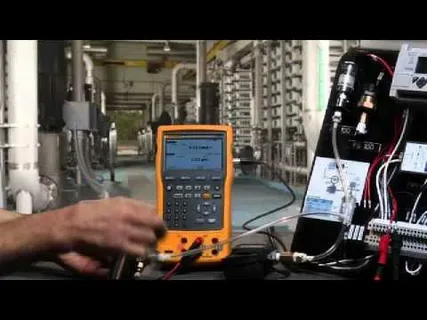7 Best Practices for Temperature Transmitter Calibration

Calibrating temperature transmitters is a crucial step in ensuring accurate and reliable temperature measurements in industrial processes. By calibrating these transmitters regularly, you can maintain measurement integrity and optimise efficiency. In this blog post, we will discuss the seven best practices for temperature transmitter calibration to help you achieve accurate results and minimise errors.
-
Understand the Basics of Temperature Transmitter Calibration
Before delving into the calibration process, it’s essential to have a solid understanding of the basics of temperature transmitters. Familiarise yourself with the instrument’s specifications, including its accuracy, range, and sensing element. Additionally, learn about any specific requirements or procedures suggested by the manufacturer.
-
Use a Reference Standard
To calibrate a temperature transmitter, you’ll need a reliable reference standard. This can be a calibrated temperature source such as a dry-well calibrator or a temperature bath. Ensure that the reference standard is traceable to national or international standards. Using a reference standard will enable you to compare the transmitter’s output with known temperatures accurately.
-
Document Your Calibration Process
Maintaining detailed records of your calibration activities is essential for quality control and audit purposes. Document the date, technician’s name, reference standard used, and the calibration results. Include any adjustments made during the process. This documentation will help you track the instrument’s performance over time and identify any trends or issues.
-
Allow Sufficient Stabilisation Time
Temperature transmitters need time to stabilise and reach thermal equilibrium before calibration. This stabilisation period allows the transmitter to adjust to the ambient temperature and ensures accurate measurements. Follow the manufacturer’s recommendations for stabilisation time, as it may vary depending on the type of transmitter and application.

-
Perform Zero and Span Calibration
Zero and span calibration are two critical steps in temperature transmitter calibration process. Zero calibration involves adjusting the transmitter’s output when it measures zero temperature (e.g., ice bath). Span calibration, on the other hand, involves adjusting the output at a specific high-temperature point (e.g., boiling water). Follow the calibration procedure provided by the manufacturer or refer to industry standards for guidance.
-
Consider External Influences
During calibration, it’s crucial to account for any external influences that might affect temperature readings. Factors such as ambient temperature, electrical interference, and vibration can impact the accuracy of the transmitter. Take necessary precautions, such as shielding the instrument from electromagnetic interference, to minimise errors and ensure reliable measurements.
-
Regularly Verify Calibration Results
To maintain accuracy, it’s important to verify the calibration results periodically. Perform verification checks at predetermined intervals using a calibrated reference standard. This step will help identify any drift or deviations from the desired calibration accuracy. If significant discrepancies are found, take the necessary actions to bring the temperature transmitter back into calibration.
Conclusion
In conclusion, temperature transmitter calibration is a critical aspect of maintaining accurate temperature measurements in industrial processes. By following these seven best practices, you can ensure reliable and repeatable results.
Remember to understand the basics, use a reference standard, document the process, allow sufficient stabilisation time, perform zero and span calibration, consider external influences, and regularly verify calibration results.
Adhering to these practices will help optimise your calibration process and enhance the overall performance of your temperature transmitters.


